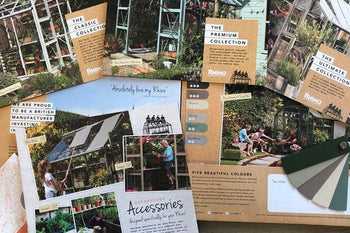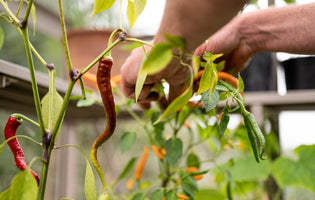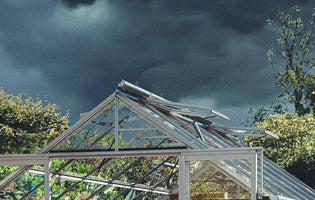April showers are definitely living up to the name, with wet weather and chilly conditions, just as Daffodils and Tulips start to brighten up the garden. In Norfolk where I am based, it has definitely halted some of the jobs I wanted to get done both in the garden and down my allotment. I find April and May the best months for general outside jobs such as patio cleaning and fence painting. But not this year! Thankfully the Rhino Greenhouse is keeping my tender perennials and seedlings safe and sound from the inclement weather. There are trays of seedlings from Zinnias to Lettuce and Runner beans to Cosmos. I am hoping for a colorful and productive year on the plot.
April is a great month for sowing wildflowers. There are so many benefits of creating a wildflower area, in any size space. Allowing an area in your garden to grow wild is an interesting way to see what pops up or even just a patch of your lawn allowed to grow long will attract moths and other insects. You never know what you might find or what grows if just allowed.
Alternatively sowing and growing a wildflower mix is an easy way to know what will pop up, and you can choose seed to sow to attract specific wildlife - such as thistles for Goldfinches. Wildflowers can be sown in pots, so if you only have a small space, thats no problem at all. Otherwise, clear an area in your garden and grab your wildflower seed packets. Wildflowers won’t be able to compete with grassy or weedy areas, so the soil does need to be cleared and in a site with some sun. Deep shade or under trees such as Conifers can be problematic. Sow the seed lightly, with no need to cover over or just sprinkle a light, sifted layer of compost on top. Keep the soil well watered and watch what grows. Many will lay dormant until the weather conditions are exactly what they need to grow.
Depending on the wildflowers you are sowing, perennials will flower in the second or third year after sowing and annuals in the first year. In the meantime, continue to remove weeds and keep moist. Alternatives to seeds are seed balls, seed bombs and seed paper. All great fun for kids! If you have no patience, there are even wildflower mats or turf with a mix of herbs, wildflowers and flowering perennials already sown and growing for an instant wildflower meadow. You can purchase seed mixes to include Buttercup, Betony, Knapweed, Sorrel, Yarrow, Daisies, Primula, Cornflower, Foxglove, Wild Carrot and so much more.
Whichever option is best for you and your garden, wildflowers can help to create a biodiverse space and bring so much more wildlife to your garden. I can’t wait to see my new wildflower patch on the allotment grow.
Ellen Mary








